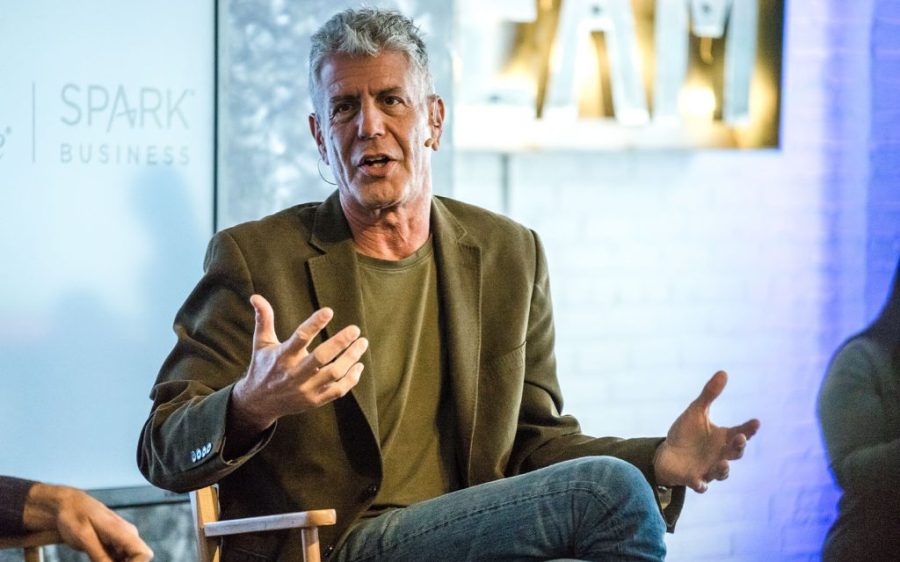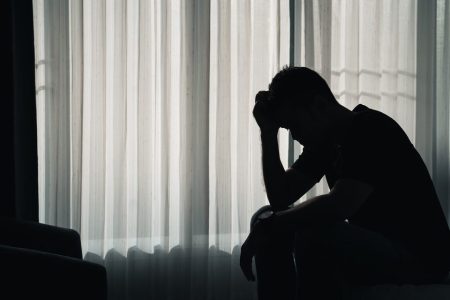Bigger than life would be one way to describe Anthony Bourdain. After toiling in the kitchens of New York for more than two decades, the American writer, celebrity chef and TV presenter was brought to the limelight when The New Yorker published his seminal 1997 article “Don’t Eat Before Reading,” a no-holds-barred examination of the restaurant industry. The article gave readers a taste of Bourdain’s unparalleled storytelling ability and candid style, which was carried over to his follow-up bestseller, Kitchen Confidential.
Never one to mince words, Bourdain was known for his disdain of vegetarians, airplane food and McNuggets. Despite his opinionated nature, Bourdain or Tony, as he was affectionately called, was known for being humble, introspective and inquisitive. He demonstrated these qualities in spades through his food and travel shows, including A Cook’s Tour (2002-2003), The Layover (2011-2013) and Parts Unknown (2013-2018).
These programs saw Bourdain visiting far-flung places, where he introduced audiences to authentic local cuisine, all the while interacting with locals and learning about their culture and concerns. As Bourdain put it, “I travel around the world, eat a lot of sh*t and basically do whatever the fu*k I want.”
[See more: Neighbourhood flavours: A guide to Macao’s Leal Senado iconic food spots]
In 2011, Bourdain made his first trip to Macao, where he filmed an episode of No Reservations (the show that ran from 2005 to 2012). Sadly, it would end up being his only televised visit to the city, as the presenter died by suicide in 2018.
In the years since, Bourdain has remained a celebrated figure, as illustrated by Anthony Bourdain Day, which was launched in 2019 by his friends and fellow chefs, José Andrés and Eric Ripert. The pair chose Bourdain’s birthday, 25 June, to commemorate his legacy and impact, urging fans to annually hold events and activities that “celebrate everything Tony did for the world, and how he used food to break down walls and build longer tables.”
To mark Anthony Bourdain Day this year on what would have been Bourdain’s 69th birthday, we revisit his only Macao-based episode, including the key places where he filmed and the people he interacted with.
The casinos: Grand Lisboa and the Venetian
!["He [Anthony Bourdain] spoke to me like he was a normal guy and not a global celebrity,” says Jeffrey Ng, who is pictured on the right together with Bourdain (centre) and Johnny Fok (left)](https://macaonews.org/wp-content/uploads/2025/06/03-Anthony-Bourdain-Macao-1024x640.jpg)
Bourdain’s first stop in the Macao episode was the Grand Lisboa, where he dined with World Gaming Magazine writer, Jeff Ng; high-rolling gambler, Johnny Fok; and friend Tingi Ko. The group ate at the Eight, a two Michelin starred Cantonese restaurant situated on the second floor of the casino-hotel.
On meeting Bourdain for the first time, Ng recalls a “tall, skinny” guy who was “shy or maybe reserved.” Says Ng: “He just didn’t have the same personality when the cameras were off,” mentioning that in moments between filming “Tony and I would share a pack of Malboros and a few drinks.”
Bourdain also made a stop at the Venetian, where he played Macao’s most popular casino game, baccarat, with Ng and Fok. On the Venetian scene, Ng remembers that it “took a long time to set up” as “the crew needed to get the lighting just right.”
Another hurdle was having the casino operator greenlight the scene, which would have been very difficult due to tight regulations. Luckily, the then vice president of public relations for the Venetian, Jacqueline Wu, and the then CEO, Edward Tracy, were both fans of Bourdain, with Tracy having met the celebrity chef before.
As for the final cut of the baccarat scene, Ng says that it “was all edited” and that contrary to what is shown on screen, “we had actually won a lot of money in the beginning and then started to lose.”
“I got to see Tony’s storytelling abilities come to life,” Ng says, recalling his experience in watching the episode for the first time. “Through his words and post-production editing, the scene turned out more entertaining than how it was filmed…They [Bourdain and his production crew] created great content and that’s why Tony had a huge following.”
For those wondering whether or not Bourdain actually won the roughly US$3,000 mentioned in the episode, Ng makes it clear that he “did win that much,” but notes that the winnings were “a small amount” for the celebrity who “made more money at speaking engagements.”
After the Venetian shoot, the crew “wound up pretty drunk” in their bid to “unwind,” according to Matt Walsh, one of Bourdain’s longtime collaborators.
“Tony and I were especially hungover the next morning when we were scheduled to film him doing the bungee jump from the Macau Tower,” Walsh says. The producer reveals that Bourdain offered his entire winnings from the Venetian if he bungee jumped with him in what Walsh supposes was an attempt at “hangover solidarity.”
“I felt so miserable [from the hangover] that I declined,” Walsh recalls, jokingly adding that “[I] wish I had that three grand today, though.”
Clube Militar de Macau
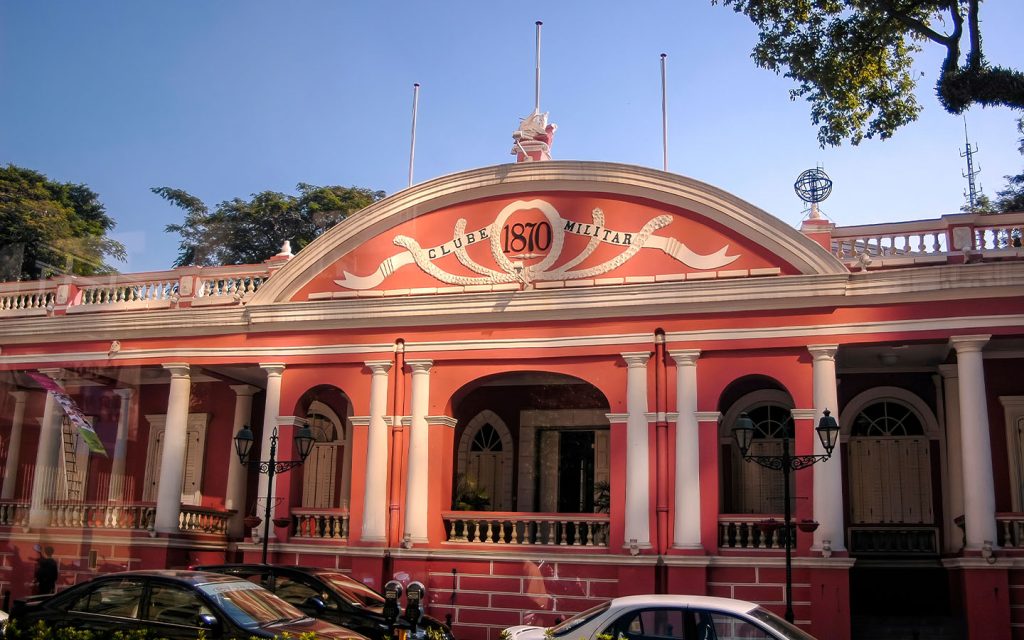
Established in 1870, this eye-catching red and white colonial building originally served as a private socialising venue for Portuguese officers and their guests. Nowadays, it’s a cultural hub and restaurant that welcomes members, as well as the general public at specific periods.
It was here where Bourdain met the local Catholic priest, Father Lancelote Miguel Rodrigues, with the pair sharing drinks and discussing the Portuguese legacy in Macao and the city’s pervasive gambling culture.
For those unfamiliar with Father Rodrigues, he was a well-respected personality in Macao who was best known for supporting refugees in Macao, helping them in various ways, with resettlement, jobs and health care.
Born in Malacca in 1923, Rodrigues was of multi-racial heritage, possessing Portuguese, Irish, Malay and Dutch ancestry. At the age of 12, he resettled in Macao, where he studied at a local seminary before joining the priesthood in 1949. After decades of tireless philanthropy, Rodrigues succumbed to illness, passing away peacefully in 2013 at the age 89.
Tasting Macanese food (Apomac and Cecília Jorge’s home)
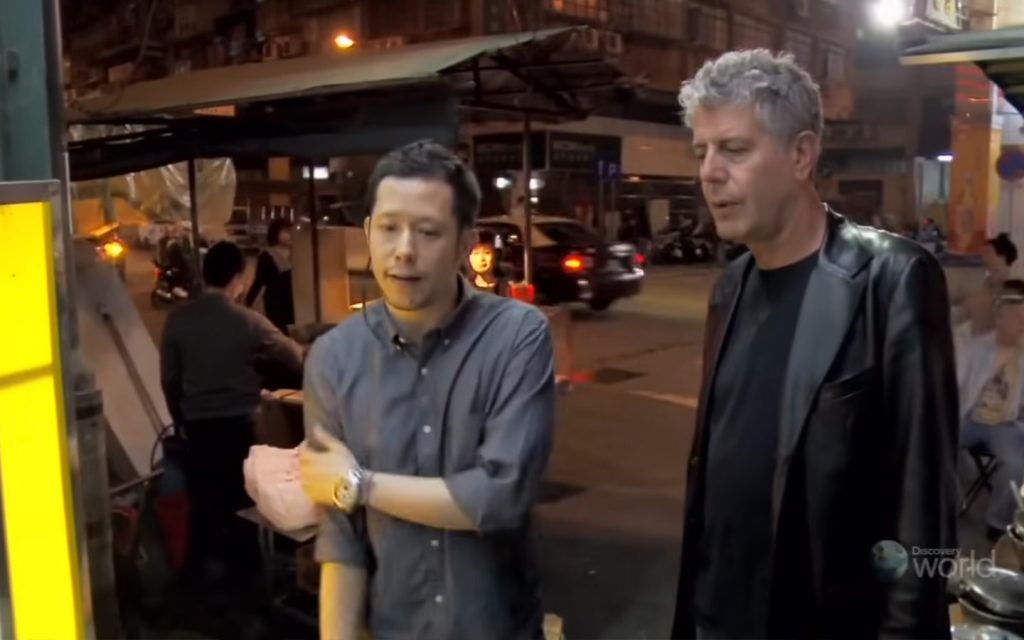
Bourdain tried Macanese food twice on camera, the first of which was in the canteen of the Association for Retirees and Pensioners of Macau (known by its Portuguese initials Apomac). In selecting his dish, the celebrity chef deferred to Father Rodrigues’ choice, savouring camarão com quiabo, a Macanese dish that consists of prawn and okra in curry sauce.
At the canteen, Bourdain was also introduced to two Macanese locals, Cecília Jorge, a writer who has published several books, including a Macanese cookbook, and her artist son, João Jorge Magalhães.
Jorge Magalhães remembers Bourdain as a person who was without airs, describing him as a “simple person” who didn’t “feel like a superstar. He was always talking about his stories in the programme, like the cities and the countries that he visited and his adventures.”
Bourdain had his second Macanese meal at Cecília Jorge’s house, with her son noting that his mother was initially against the idea of the celebrity chef dining there, although she eventually took on the challenge.
“My mum said ‘Macao kitchens are very small, so I don’t know if I have space to do a big dish, a big meal for you, but I will try my best,’” Jorge Magalhães states.
Prior to cooking the meal, Cecília Jorge consulted her son on Bourdain’s food preferences, with Jorge Magalhães advising her to cook Bourdain’s favourite food item, pork, or “whatever you want,” with the exception of “vegetables,” as the chef was not particularly fond of them.
“My mum said, ‘no, no, in my house everybody eats vegetables,” Jorge Magalhães says. “The first dish she put in front of Anthony Bourdain was spinach made in a Macanese way and he had to eat it. All the crew members were laughing because they knew that he didn’t like it.”
Luckily, there was ample meat for Bourdain as well, as Cecília Jorge served a generous helping of minichi cooked with wood ear mushrooms, as well as soy sauce roast chicken.
Fernando’s

As one of the most famous Portuguese restaurants in Macao, Fernando’s was a obvious stop for Bourdain. According to Jorge Magalhães, he took Bourdain to the restaurant after the TV host said he wanted “to have a Portuguese meal [in] a Macanese way” and asked the artist to invite his friends for a discussion that would end up delving into Macanese identity and the persistent Portuguese culture in the city.
“I think he enjoyed it a lot,” Jorge Magalhães says regarding Bourdain’s meal at Fernando, which saw him enjoy grilled chorizo, clam steamed with garlic, cilantro and white wine with Malagueta pepper, grilled sardines and suckling pig marinated in wine and spices.
The Macao artist recalls that “every meal [had] to be with some [red] wine or some beer.”
While dining at Fernando’s, Bourdain also had the chance to meet its owner, Fernando Gomes, who established the restaurant that bears his namesake in 1986. In an interview with Macao Closer Magazine in 2018, Gomes remembers Bourdain as a storyteller who recounted his 20 years of experience as a chef with an air of humour.
Leitaria I Son – Yee Shun Milk Company
With a history of more than 150 years, Leitaria I Son is best known for its various hot and cold milk desserts, although other classic cha chaan teng dishes are also available.
Bourdain was taken to this long running establishment by Ng, who says that it “was a place that Matt [Walsh] had found.” The branch that the pair visited, which was situated on No. 60 Avenida de Almeida Ribeiro, no longer exists, but there are plenty of other stores, including one on No. 381 Avenida de Almeida Ribeiro and another on No. 81 Rua dos Clérigos in Taipa.
Ng and Bourdain also paid a trip to the now-defunct canidrome, although it never made it into the final episode “due to clearance issues.”
“I remember Tony winning big,” Ng recalls. “I had used previous stats on the dogs, reviewed what other bettors were recommending and I still lost. Tony made bets based on the colour of the dogs’ socks, and won! Unbelievable.”
Street Food at Patane
Towards the tail end of the Macao episode, Bourdain ventured out into the Inner Harbour area with Jorge Magalhães to try out the street food there. The pair didn’t have any particular ideas on what they wanted to try, with Jorge Magalhães stating that his plan had simply been to take Bourdain to the Rua de Cinco de Outubro “because it’s a very good street with a lot of restaurants.”
The local artist recalls walking along the street whereupon they stumbled upon a street vendor called 長安粥品 (Coeng On Zuk Ban, a congee shop), which served a variety of food items, including zyu coeng fan (豬腸粉, literally pig intestine rolls), a rice noodle roll with no fillings that is normally served with hoisin sauce, peanut sauce and sesame seeds. Bourdain’s curiosity was immediately piqued after seeing the unique looking dish, resulting in the filmed segment of the pair sitting on wooden stools and enjoying their zyu coeng fan while facing the traffic of Rua da Ribeira do Patane.
In the episode, Bourdain and Jorge Magalhães also lamented the erosion of Macao’s and Asia’s rich street food culture due to various factors, including the tightening of regulations. Since then, the situation has only deteriorated, with more and more vendors, including Coeng On Zuk Ban, closing down.
“Nowadays, everything is inside the restaurant,” Jorge Magalhães observes. “You don’t have these kinds of food stalls because with some of them, nobody wants to take the job [and license] from the parents. The licence goes from family to family, and nowadays they don’t have it.”
Tai Lei Lok Kei Pork Chop Bun
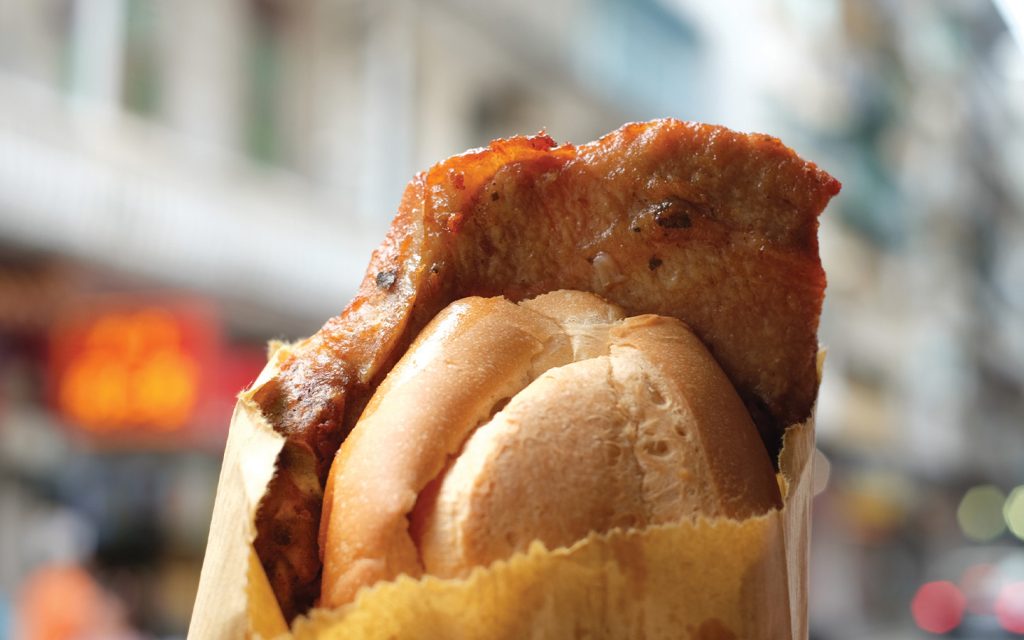
Given Bourdain’s love affair with pork, it was only fitting for him to end his Macao episode with a trip to the Taipa branch of Tai Lei Lok Kei (大利來記餐廳), the renowned restaurant that has been making the city’s iconic Macao pork chop bun for more than five decades.
As the name suggests, the Macao pork chop bun is quite literally a pork chop slice placed between a french-style roll known as a zyu zai baau (豬仔包, piggy bun) in Cantonese. Despite its relative simplicity, Bourdain was full of hyperbolic praise for the dish, calling it “the product of genius and a distinctly Macanese creation, which will live on in history.”
The US media personality’s passion for the Macao pork chop bun continued well after he left Macao, as he featured a “Macao-style pork chop sandwich” in his final cookbook, Appetites (2016).
“This sandwich, loosely inspired by a pork chop bun served to me for television in Macao, is possibly the most delicious thing in the book,” Bourdain wrote. “We had a hard time shooting it, because everyone in the room kept eating the models.”
Postscript
When Jorge Magalhães and his mother did their three days of filming with Anthony Bourdain, they never realised how much of a cultural icon he was. It was only after the US celebrity’s death in 2018 that they grasped the enormity of his impact.
“I don’t think Anthony Bourdain [was] doing a food show,” Jorge Magalhães says, “He’s doing a cultural show with food. He makes people feel like they want to travel to that place.”
Ng agrees, describing Anthony Bourdain as “not your normal television travel guide.” Says Ng: “He had an edge; a grand vocabulary; a storyteller that painted vivid pictures with his words; and he said what you were thinking, but was too afraid to say.”
For his part, Anthony Bourdain made it clear in the finale of No Reservations what his mission had been all along, parting with the following words: “If I’m an advocate for anything, it’s to move. As far as you can, as much as you can. Across the ocean, or simply across the river. The extent to which you can walk in someone else’s shoes or at least eat their food, it’s a plus for everyone. Open your mind. Get up off the couch. Move.”
If you or someone you know is having thoughts about suicide, call the Caritas Hope for Life Hotline. The English and Portuguese language service can be reached on 2852 5777 and operates from 2:00 pm to 11:00 pm Sunday to Tuesday and from 9:00 am to 6:00 pm Thursday to Saturday. It is closed on Wednesdays and Public Holidays. The Chinese language service operates 24/7 on 2852 5222. In an emergency, call 999, 110 or 112.

